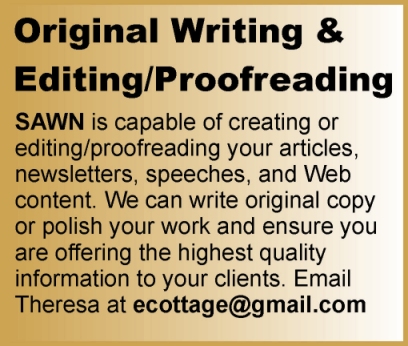
Before you even organize the framework to start writing your manuscript, there is one very important factor to consider. As in any industry, to succeed you must have a quality product to sell that will attract enough customers to buy it. To create a marketable product—in this case, a salable manuscript that will motivate a book publisher to offer you a publishing contract —you need to follow these basic steps.
Step 1: Read other writers’ work before you start writing. Read everything you can lay your hands on – magazine features, classics, comics, science fiction, biographies, and romance and fiction books — and see how they do it, just like a novice crafts person that works as an apprentice and studies the master. Become an avid reader. Carry a book with you wherever you go. Spend every spare moment learning your craft. You will learn different writing genres when you read. In brief, a genre is a form of text that uses a particular format and structure. Once you recognize that there are different genres, you will discover how to navigate through each kind of text to find the information you seek. In this way, you learn that how-to text often includes a list of materials and a list of steps; biographies are generally organized in chronological order; and persuasive text often has attention-grabbing features to attract a reader’s interest. In-depth knowledge of different genres will help you to recognize what you are reading and help you to quickly identify pertinent information.
Step 2: Start writing. You’ll know intuitively if it is good. If it’s not, delete and start again. Editors and publishers urge authors to be aware of their target readership and to focus on a typical reader profile when writing. This approach will give you a good chance of selling your manuscript and publish books aimed at a solid fan base. The style of writing publishers generally look for is ‘relentlessly commercial’; familiarize yourself with publishers’ title lists to gain access to the right publisher to have your manuscript considered. Read books and magazines on the genre you are interested in. Pay attention to emerging target markets and trends. If you don’t work hard at the business end of your writing, you’re just setting yourself up for rejection. Don’t write in a genre unless you enjoy it.
Step 3: Write for yourself. This instruction sounds as if it contradicts the course of action suggested in step 2, but it doesn’t really. Writing to please your target market and writing for yourself can co-exist. It’s a fine line however, but it is important that you know how to blend both elements. The writer must shape the writing process ‘on the inside’ to be believable to the reader. Writing with integrity requires a great depth of skill; you need to combine what you like to read with what sells. Be true to what you want to write; if you have a novel in mind, you should write the best story possible. If you write about something you’re really interested in, it’s going to show.
Step 4: Learn how to write well. You might be an avid reader and feel confident to write a manuscript, but writing a manuscript for publication demands much more than a personal desire to tell your story. It is important to know how to bring your work up to professional publishable standards before submitting it for consideration. Writing a manuscript is not something that happens instantly, even if you are an avid reader. Learning the craft of writing is an ongoing process:
- HOW-TO BOOKS are the textbooks of the trade; they cover writing in general and also focus on specific topics including insight into plot, dialogue, characterization, voice, style, viewpoint, action, and conflict. The Elements of Fiction Writing series provides a good reference for any writer. There are also books on grammar, style and usage; The New Word Power by David Aday, Margaret Orr and Derek Swemmer is a good choice.
- MAGAZINES AND NEWSLETTERS. There are many periodicals that publish articles by published authors and editors that can help you, such as Writer’s Digest magazine, and The Writer.
- WRITING COURSES. Many aspiring writers enroll in creative writing courses, either by attending classes or distance education. SAWN offers a self-study tutorial, “Introduction to Creative Writing”.
- ADULT EDUCATION PROGRAMS. A university master’s course in creative writing usually incorporates workshops and seminars, taught by experienced writers and lecturers. Adult education programs on writing generally attract people who want to improve their craft and learn how to get published. SAWN offers a self-study tutorial, “Introduction to Getting Published”.
- WRITER’S MARKET. This publication contains valuable information to help any writer learn the basics of publishing their work, from how to write a query letter to finding contact details of literary agents, book publishers, small presses, consumer magazines, trade journals, newspapers, screenwriting, playwriting, contests and awards.
- WRITING GROUPS. Many writers benefit from the feedback they get from writing group members. Novice writers who are uncertain about their skills should always try to get someone to read your work and learn from constructive criticism.
- CRITIQUES. Paid critiquing—by a trusted professional—is also a possibility to consider. SAWN provides a detailed critique (with comments that pinpoint problem areas and offer suggestions on how to correct them); a typed-up report covering any of the writing or plotting problems identified in your manuscript is submitted.
Step 5: Polish your work. Many new writers do not realize that they need to re-read their manuscript – often numerous times to make sure it is free of errors, typos, formatting, point–of-view problems, plotting mistakes, and characterization inconsistencies. Self-editing is an important part of the editing process. Some sections of the manuscript may need to be re-written. Going over the material allows writers to learn a lot about improving their work. Only submit your manuscript to a book publisher or editor if you are confident it is the best you can deliver.





 I’m a published author of four business books and have written a number of self-study tutorials [creative writing; editing and proofreading; business writing; and self-publishing] and an eBook [Workplace Harmony]. I am an experienced writer, editor and publisher.
I’m a published author of four business books and have written a number of self-study tutorials [creative writing; editing and proofreading; business writing; and self-publishing] and an eBook [Workplace Harmony]. I am an experienced writer, editor and publisher. 




